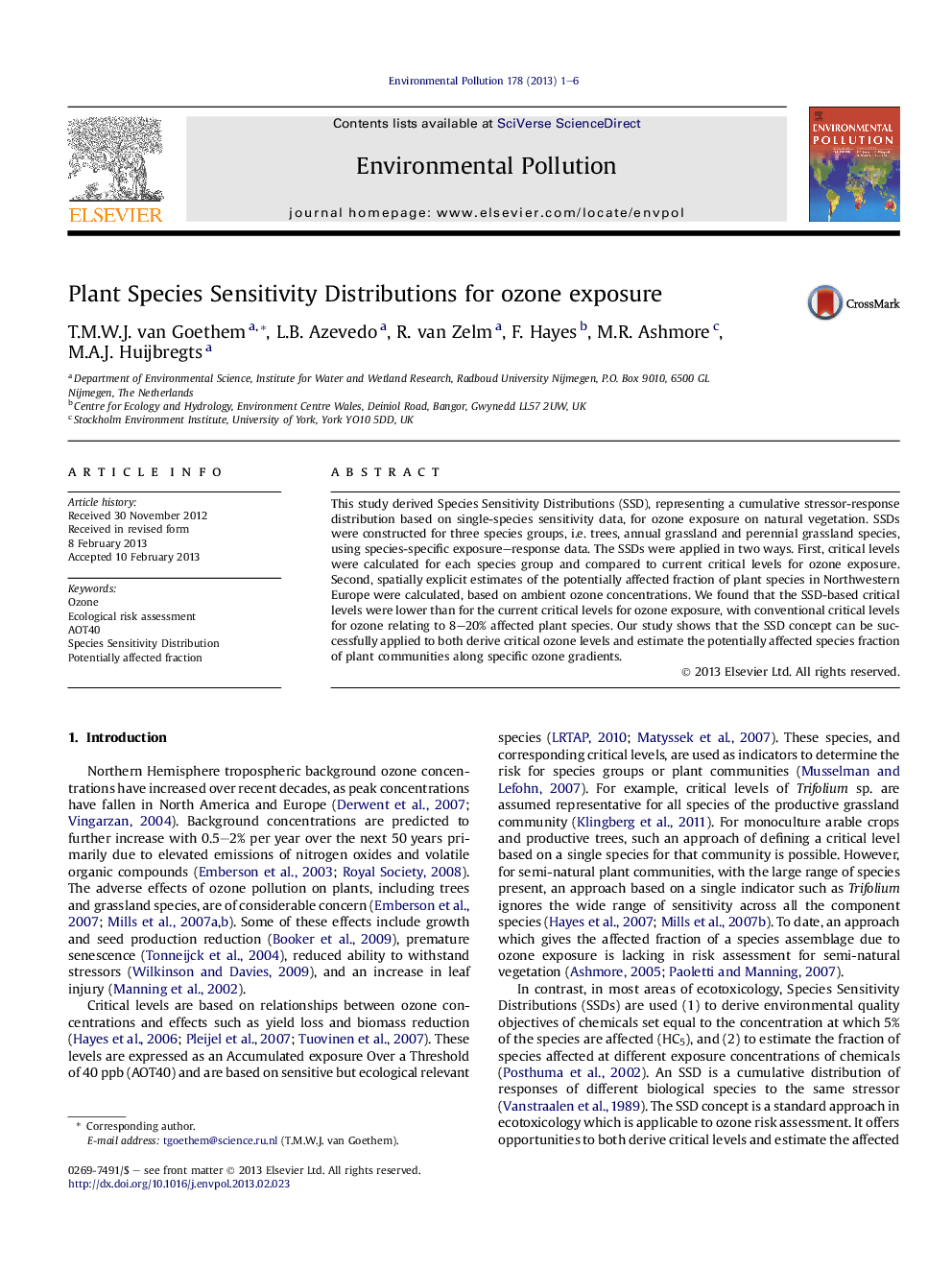| Article ID | Journal | Published Year | Pages | File Type |
|---|---|---|---|---|
| 6318862 | Environmental Pollution | 2013 | 6 Pages |
This study derived Species Sensitivity Distributions (SSD), representing a cumulative stressor-response distribution based on single-species sensitivity data, for ozone exposure on natural vegetation. SSDs were constructed for three species groups, i.e. trees, annual grassland and perennial grassland species, using species-specific exposure-response data. The SSDs were applied in two ways. First, critical levels were calculated for each species group and compared to current critical levels for ozone exposure. Second, spatially explicit estimates of the potentially affected fraction of plant species in Northwestern Europe were calculated, based on ambient ozone concentrations. We found that the SSD-based critical levels were lower than for the current critical levels for ozone exposure, with conventional critical levels for ozone relating to 8-20% affected plant species. Our study shows that the SSD concept can be successfully applied to both derive critical ozone levels and estimate the potentially affected species fraction of plant communities along specific ozone gradients.
⺠Plant Species Sensitivity Distributions were derived for ozone exposure. ⺠Annual grassland species, as a species assemblage, tend to be most sensitive to ozone. ⺠Conventional critical levels for ozone relate to 8-20% affected plant species. ⺠The affected fraction of plant species for current ozone exposure in Northwestern Europe is estimated.
